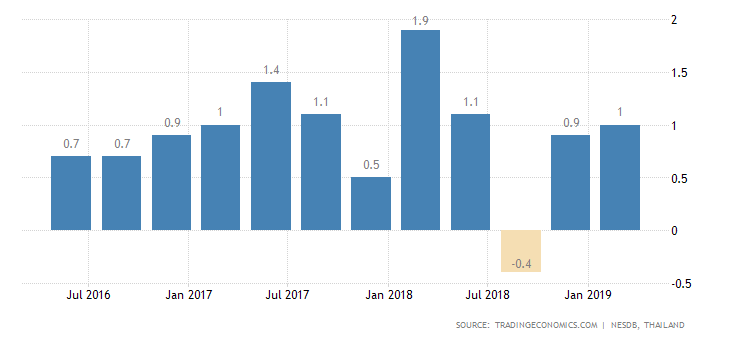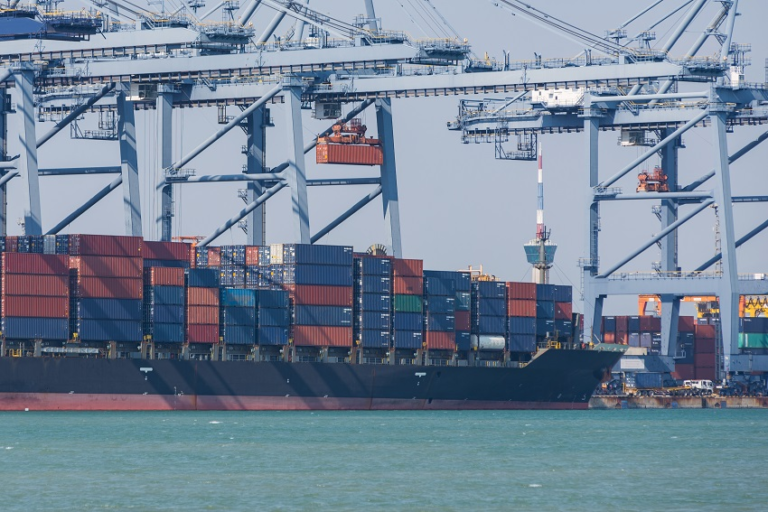With the China-U.S. trade dispute and higher tariffs getting a lot of headlines, there’s growing discussion about the many global companies looking for alternatives to China for sourcing manufacturing and materials.
Near, or at, the top of the list companies are looking at is Thailand. The country is already benefiting from the dispute and hopes this is a trend that will continue.
Thailand is a relatively newly industrialized country, with the second-largest economy in Southeast Asia, after Indonesia. It’s also second in the region for external trade volume, after Singapore. Clearly, the country is heavily dependent on exports, which continues to drive its GDP.
Thailand’s Economy
Thailand is an upper-middle income country, with low levels of extreme poverty for the region. Tourism is the center of the economy and is expected to remain core to sustaining growth. The service sector continues to contribute heavily to Thailand’s economic status, as well.
At the same time, Thailand’s government, which is military-controlled, has enacted policies aimed at increasing consumption and investment by making regulation more efficient and transparent. Thailand appears to be taking the right approach to growing its economy and is starting to see the results.
Current Economic Growth in Thailand
Even with tourism as a key economic driver, Thailand still has a very global economy with manufacturing for export a large part of it.
Thailand is the 23rd largest export economy in the world, according to the Economic Complexity Index (ECI). In 2017, the country exported $215B and imported $160B, which created a trade balance of $54.8B. GDP growth is currently 3.3 percent and the inflation rate is 1.5 percent. The GDP is expected to stay in this range throughout 2019.

Exports of electronics, agricultural products, cars, processed foods, and other goods account for almost two-thirds of the country’s GDP. Thailand’s top exports are office machine parts, integrated circuits, delivery trucks, cars, and broadcasting equipment. Key export partners are China, the U.S., Japan, Malaysia, and Hong Kong.
Its top imports are gold, vehicle parts, integrated circuits, crude petroleum, and office machine parts, with key import partners being China, Japan, Singapore, Hong Kong, and Malaysia.
Thai Imports
Thailand buys a lot of product from the United States — to the tune of $250.9 billion in 2018, an increase of 11.4% as compared to 2017. However, so far this year there has been a decrease. April 2019 was at $20.01 billion, which is 0.72 percent lower than April 2018. The decline is due to lower purchases of crude oil, iron and steel, and auto-parts. As this commodity list illustrates, many of the products that Thailand imports are used to assemble other products and are shipped out again.
Globally, Thailand’s top imports are gold, vehicle parts, integrated circuits, crude petroleum, and office machine parts, with key import partners being China, Japan, Singapore, Hong Kong, and Malaysia.
Continuing the Trend
According to the 2019 World Bank Group report, Thailand scored 78.45 (out of 100) in the ease of doing business category. Out of 190 economies worldwide, the county ranked 27.
For 2019, private investment is a key factor driving Thailand’s economy. An increase in government spending on construction, machinery, and equipment has gone hand-in-hand with growing private investment. Thailand is trying to entice foreign investors by allowing their participation in certain industries, such as next-generation cars, electronics, agriculture, and biotechnology.
The country is also looking for new sources of investment in areas such as aviation, logistics, robotics, biofuels, and digital technology. The new economic model for the country, Thailand 4.0, is an initiative that focuses on growing private consumption and private investment.
With uncertainty surrounding China, and the investment Thailand is making in its own infrastructure, the country appears well-positioned to continue its economic growth and as a key exporter in the region.



